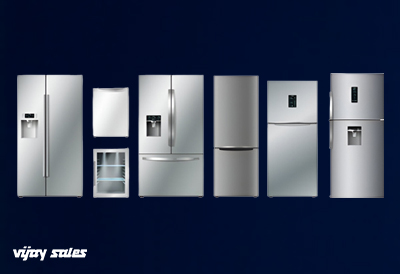Which One is the Best for You?
Your lifestyle, family size, and budget determine the correct type of refrigerator for your household.
Singles & Couples: A single-door refrigerator is space-saving, energy-efficient, and cost-effective, making it perfect for small kitchens or starter homes.
Small Families: A double-door fridge provides the perfect combination of storage and cost, with frost-free technology and dedicated freezer space.
Large Families (5+ people): Use a triple door or French door refrigerator to maximize storage and improve organization of fresh, frozen, and vegetable products.
Luxury Kitchens: For a premium experience, consider a side-by-side or French door refrigerator. Those models frequently come with water dispensers, electronic controls, and inverter compressors.
Budget-Friendly Buyers: A single-door fridge or a non-compressor refrigerator is the most budget-friendly option while providing consistent cooling.
Energy Savers: Opt for an inverter-type refrigerator, which adjusts cooling according to usage, thereby saving electricity bills in the long run.
Many individuals favor more luxurious options such as the almirah-style refrigerator, which resembles a cupboard and is designed for modern refrigeration.
Conclusion:
Choosing from different styles of refrigerators depends on your household size, storage needs, and lifestyle preferences. From compact single-door models to spacious French-door designs, each type offers unique benefits. Whether you prioritize energy efficiency, freezer space, or innovative features, there’s a refrigerator suited to your requirements. Understanding the differences helps you make a practical and informed decision.
Consider your kitchen space, daily usage, and budget to find the perfect refrigerator that offers both convenience and long-term value.


















.jpg)

.jpg)





.jpg)







.jpg)

.jpg)

_.jpg)

.jpg)













